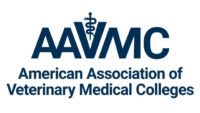Merck Animal Health announces results of consumer transparency research study
The study finds that two-thirds of consumers say transparency in animal protein is extremely or very important.

Merck Animal Health, known as MSD Animal Health outside of the United States and Canada, a division of Merck & Co. Inc., headquartered in Rahway, New Jersey, is announcing the results of the company’s first-ever consumer transparency research study, finding that two-thirds of consumers say transparency in animal protein is extremely or very important.
The consumer transparency study focused on consumers’ growing interest in transparency and its importance in their purchasing decisions and brand trust. The study explored consumer desire for transparency in animal protein, such as meat, fish, eggs and dairy, and their perceptions of industry transparency when it comes to animal welfare and sustainability. It also looked at the interplay of transparency and traceability and consumers’ willingness to pay for transparency label claims.
“The survey results tell us consumers want more information than ever in order to make informed decisions about the food they put on their dinner tables,” said Allison Flinn, DVM, executive director, value chain and consumer affairs, Merck Animal Health. "We work to be the industry leader in improving animal health through our biopharmaceutical and technology portfolio solutions, and we also have the technology that can provide greater transparency and allow consumers to make informed decisions. In fact, our DNA [TRACEBACK] technology, which uses nature’s bar code[ — DNA — ]with data analytics, provides an evidence-based animal protein traceability solution to accurately trace meat and seafood that is verifiable from farm-to-table to help build trust in food labels.”
The DNA TRACEBACK platform is the most advanced meat traceability solution that verifies the exact origin of meat products for the food producer, food retailer and consumer. Each animal in the program is DNA sampled so that in every stage of the production chain — from the farm gate, the processing plant and right through to the restaurant plate — the exact origin of meat or seafood is verified. A sample of each animal’s DNA code is captured at slaughter and assigned a unique barcode number. This DNA number is then linked to the animal and can be traced through the supply chain all the way to individual cuts of meat served in restaurants.
Study methodology
The consumer transparency study surveyed more than 1,000 consumers who represent the U.S. shopper. The study defined transparency as knowing how food was grown, raised and made. Traceability was defined as knowing where foods come from, or more specifically, being able to follow the movement of food products and ingredients through the supply chain. Highlights from the study include:
- Two-thirds, or 66%, of consumers reported transparency in animal proteins (meat, fish, eggs and dairy) is extremely or very important and the reasons are personal — health and nutrition top the list
- 86% of consumers who reported transparency is important also rank traceability as extremely/very important, and 40% of those consumers also want to know where the livestock comes from
- Over 50% of consumers surveyed reported they were willing to pay a 5% premium for transparency on the label and want more information than ever about how their food is grown and raised to make informed decisions at the grocery store
- High-transparency seekers, or those who consider transparency most important to their purchasing decisions and are willing to pay for it on the label, are typically millennial, non-Caucasian, educated males who live in urban areas with their children — and they do the grocery shopping
- Environmental sustainability and animal welfare are important animal protein purchase considerations, with 55% surveyed reporting environmental sustainability as very/extremely important and 66% reporting animal care/treatment as extremely important/very important
“Sustainability, nutrition, food safety, and animal welfare are all topics consumers want to know more about, and we know greater transparency builds trust,” said Dr. Flinn. “Consumers also want to know the brands they buy from are transparent, and this research provides insights into how farmers, ranchers, food brands, and allied industry partners like Merck Animal Health can collaborate to meet their expectations.”
Source: Merck Animal Health
Looking for a reprint of this article?
From high-res PDFs to custom plaques, order your copy today!







